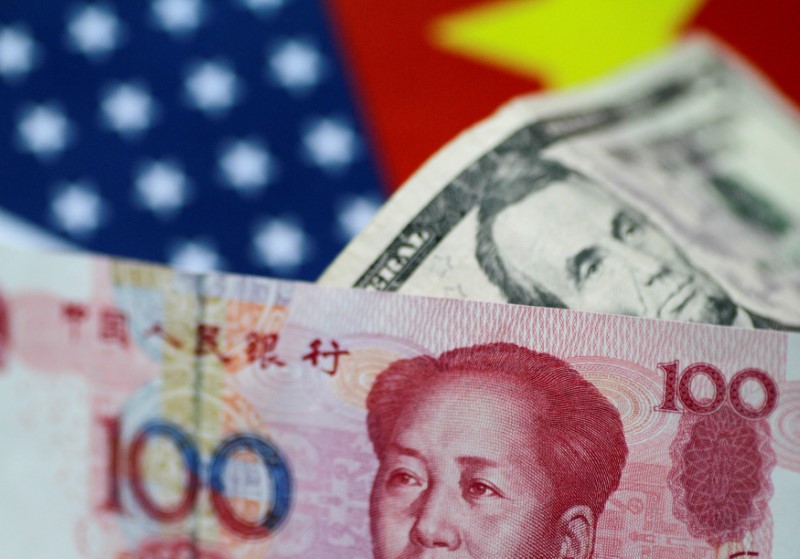S&P 500 slips, but losses kept in check as Nvidia climbs ahead of results
Investing.com-- Most Asian currencies edged higher on Monday as the dollar retreated ahead of key U.S.-China trade talks in London later in the day, while the Chinese yuan traded flat following soft inflation data and disappointing export figures.
The US Dollar Index, which measures the greenback against a basket of major currencies, fell 0.2% in Asia hours, after surging on Friday on strong U.S. jobs data.
US Dollar Index Futures were also trading 0.2% higher.
Asia FX ticks up as markets eye US-Sino trade dialogue
U.S. Treasury Secretary Scott Bessent, Commerce Secretary Howard Lutnick, and Trade Representative Jamieson Greer are expected to meet China’s Vice Premier He Lifeng in London, building on a tentative truce established in Geneva last month.
The agenda will focus on rolling back tariffs, adjusting export rules on tech and critical minerals, and defining broader trade frameworks.
Markets were reacting to renewed optimism that the discussions could ease global trade tensions and provide clarity on critical policy issues.
However, regional markets remained cautious as traders await actual outcomes rather than just talk. With U.S. consumer price index (CPI) inflation data looming later this week, investors were balancing hopes for trade de-escalation with broader macroeconomic dynamics.
The Singapore dollar’s USD/SGD inched 0.2% lower.
The Indian rupee’s USD/INR pair lost 0.2%, while the South Korean won’s USD/KRW was also trading 0.2% lower.
The Australian dollar’s AUD/USD pair rose 0.3%.
China’s inflation, trade data; Japan’s GDP in focus
The Japanese yen’s USD/JPY pair fell 0.3%. Data on Monday showed that Japan’s economy contracted slightly less than initially estimated in the first quarter amid stagnant consumer spending and falling exports due to tariff-induced trade woes.
The Chinese yuan’s onshore USD/CNY and offshore USD/CNH pairs were both largely unchanged on Monday.
Data on Monday showed that Chinese consumer price index inflation eased for a fourth straight month in May, while producer inflation fell by its sharpest pace in nearly two years.
Other data showed that the country’s export growth missed expectations as high U.S. trade tariffs dented overseas demand, although its trade balance grew more than expected in May due to a decline in imports.
